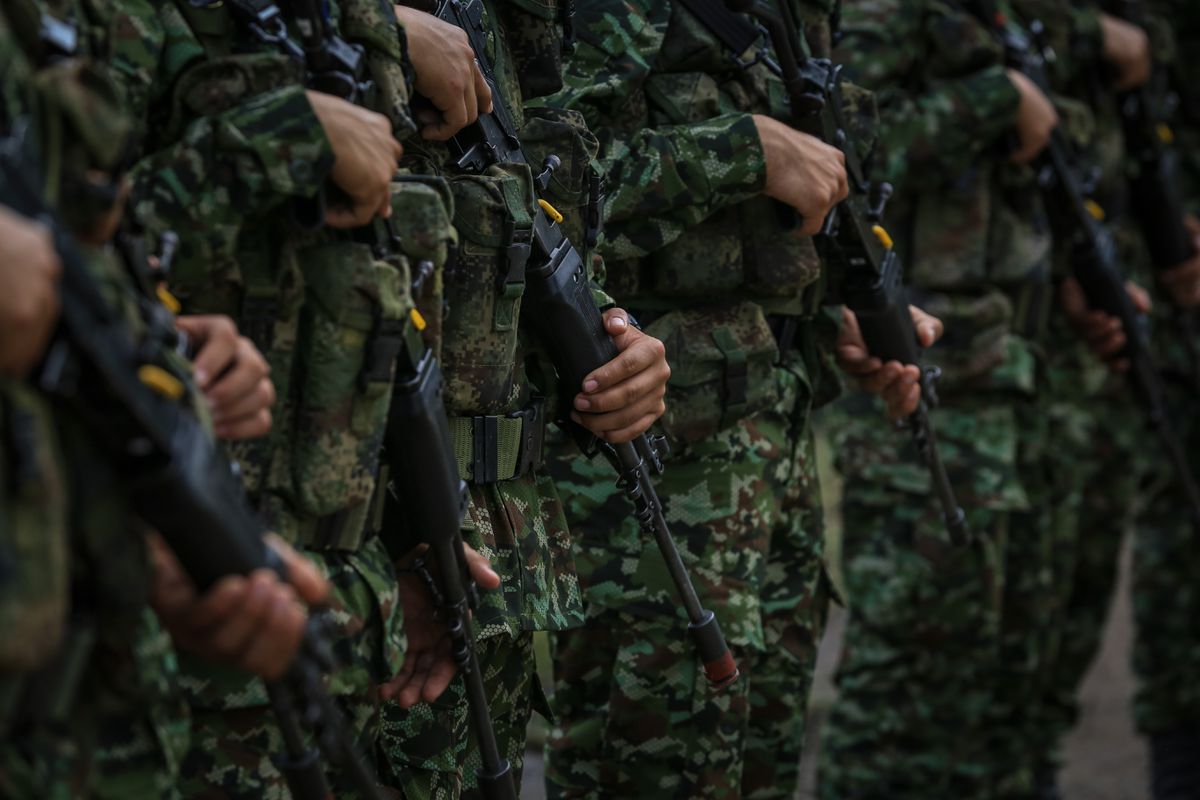 Soldiers of the Colombian Armed Forces. Anadolu Agency (via Getty Images)
Soldiers of the Colombian Armed Forces. Anadolu Agency (via Getty Images)
The events that occurred on September 11th in the Bocas del Manso district of the municipality of Tierralta, Cordoba, continue to be confusing. A group of armed men wearing dark clothing and covering their faces with balaclavas threatened civilians, including pregnant women and children. Several videos recorded on residents’ cell phones bore witness to the harassment and went viral within hours; Witnesses indicate that they even attempted to rape an indigenous woman. It was later learned that they were not members of the FARC dissidents, as they themselves had announced upon their arrival, but rather army soldiers belonging to the Junín Battalion.
While the Public Prosecutor’s Office, the Attorney General’s Office and the military criminal justice system are carrying out investigations, army commander Luis Mauricio Ospina reported new decisions this Tuesday. In an official statement, he announced that six officers and four non-commissioned officers would be retired because their behavior “endangered the principles and values of the institution.” The document ensures that “the procedures carried out were completely contrary to the rules, laws and military doctrine.” The Army also ordered the retirement of eight professional soldiers linked to the events. Another 13 people, who did not directly participate but had some kind of relationship with each other, were sent to carry out administrative tasks.
The commander had previously announced the decision to remove ten soldiers involved from the facility: “I have made the decision to withdraw the trust and responsibility for carrying the weapons of the Republic and to deprive the commanders of the high exercise of the dignity of the commander “to separate and control” the military unit,” he said on Friday, September 14, three days after the harassment. But it was only this Tuesday that the punishments set were known, which show that the decision is harsher: not only will they be separated and their weapons taken away, but they will also leave the institution.
Since the videos came to light, the army has expressed its denial, clarifying that “the Junín Infantry Battalion No. 33, assigned to the 11th Brigade, carried out operations against structures of the organized armed group Clan del Golfo with the aim of protecting local communities in of the region.” The text indicates that the purpose of the mission was to conduct reconnaissance tasks in the area “in response to previous information about mobility corridors used by criminal groups for illegal activities.”
The group, also known as the Gaitanista Self-Defense Forces of Colombia, is present in the Córdoba department, an area where the FARC was located in the 80s and 90s of the last century and which later became a bastion of paramilitarism. The gang, considered the country’s largest drug trafficking gang with nearly 3,000 men, was attributed to a helicopter carrying members of the public prosecutor’s office and attorney general who flew to Tierralta to investigate the intimidation. A shot hit the plane’s fuel tank and prevented it from reaching its destination: the crew members had to change course to assess the damage.
President Gustavo Petro spoke out about the army’s harassment of civil society, describing it as an attempt to take Colombia into the past, “to the barbarism of yesteryear.” According to him, he wanted to send the message to society in general: “Oh, this government is plunging Colombia into disorder, into chaos, we have to restore order!” The president warned that the message was “directly” addressed to a social group: the landowners of Córdoba, “because they want the landowners to become paramilitaries again.” That means, “Let’s repeat this story.”
Newsletter
Current events analysis and the best stories from Colombia, delivered to your inbox every week
GET THIS
Subscribe to the EL PAÍS newsletter about Colombia here and receive all the important information on current events in the country.

